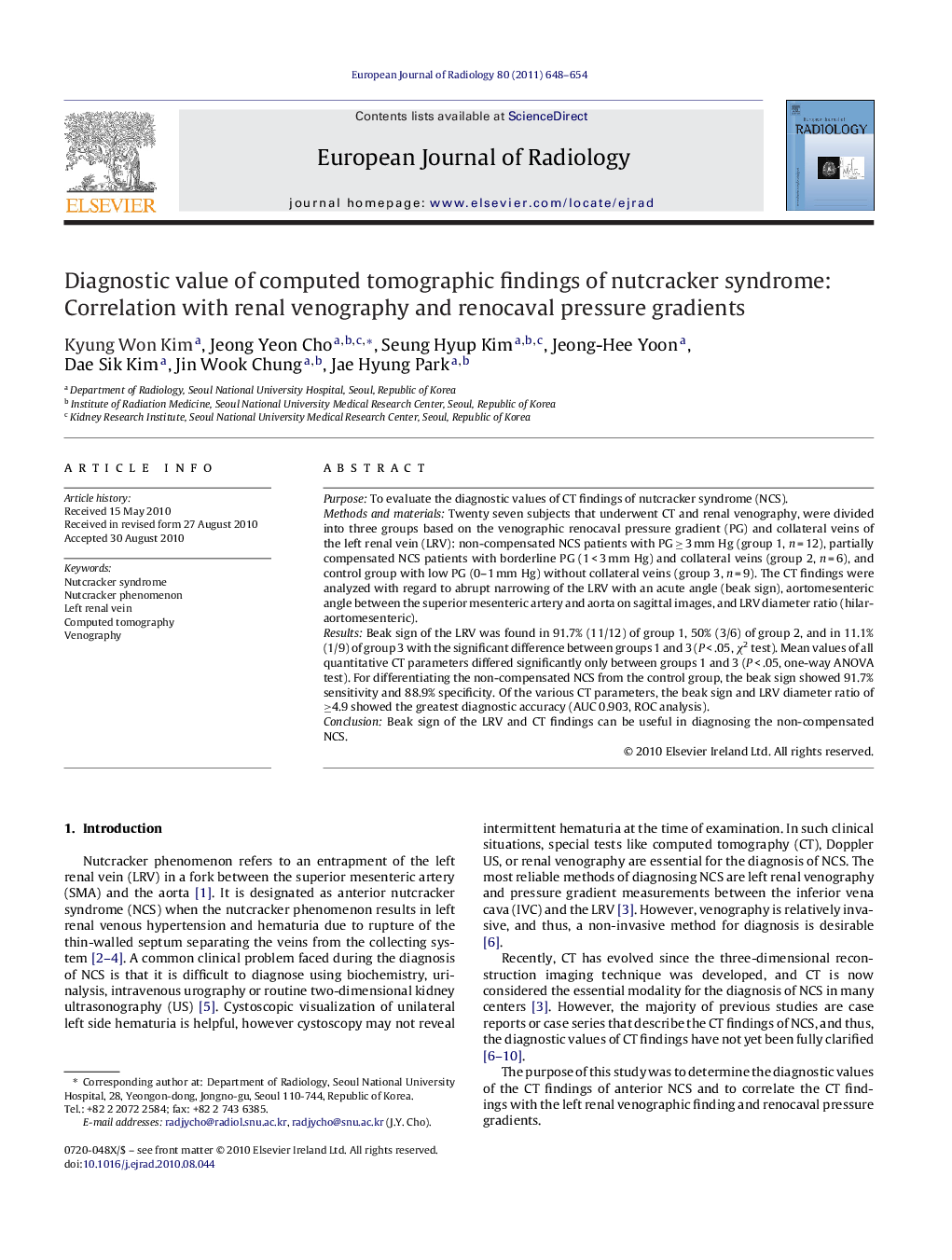| Article ID | Journal | Published Year | Pages | File Type |
|---|---|---|---|---|
| 4225804 | European Journal of Radiology | 2011 | 7 Pages |
PurposeTo evaluate the diagnostic values of CT findings of nutcracker syndrome (NCS).Methods and materialsTwenty seven subjects that underwent CT and renal venography, were divided into three groups based on the venographic renocaval pressure gradient (PG) and collateral veins of the left renal vein (LRV): non-compensated NCS patients with PG ≥ 3 mm Hg (group 1, n = 12), partially compensated NCS patients with borderline PG (1 < 3 mm Hg) and collateral veins (group 2, n = 6), and control group with low PG (0–1 mm Hg) without collateral veins (group 3, n = 9). The CT findings were analyzed with regard to abrupt narrowing of the LRV with an acute angle (beak sign), aortomesenteric angle between the superior mesenteric artery and aorta on sagittal images, and LRV diameter ratio (hilar-aortomesenteric).ResultsBeak sign of the LRV was found in 91.7% (11/12) of group 1, 50% (3/6) of group 2, and in 11.1% (1/9) of group 3 with the significant difference between groups 1 and 3 (P < .05, χ2 test). Mean values of all quantitative CT parameters differed significantly only between groups 1 and 3 (P < .05, one-way ANOVA test). For differentiating the non-compensated NCS from the control group, the beak sign showed 91.7% sensitivity and 88.9% specificity. Of the various CT parameters, the beak sign and LRV diameter ratio of ≥4.9 showed the greatest diagnostic accuracy (AUC 0.903, ROC analysis).ConclusionBeak sign of the LRV and CT findings can be useful in diagnosing the non-compensated NCS.
